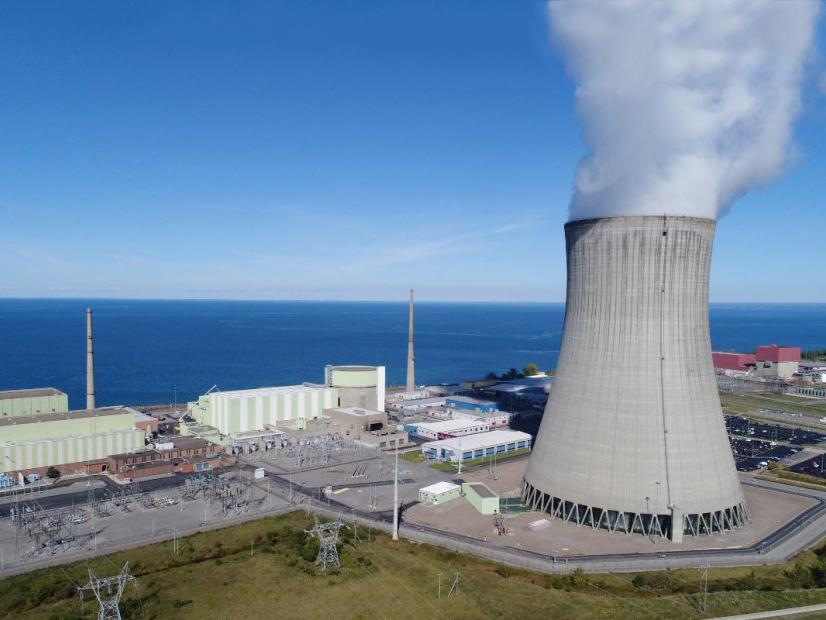Constellation Energy championed its nuclear fleet as being ready to match clean energy load when and where it’s needed during the company’s second-quarter earnings call Thursday.
“Our businesses are essential to addressing the climate crisis, and our assets are endurable. The Inflation Reduction Act provides unique opportunities for Constellation and its investors. We believe that we will be able to use nuclear energy to produce hydrogen. We will be able to re-license our nuclear fleet to run at least 80 years without needing to replace it, and the [Inflation Reduction Act] provides, at long last, a long-term commitment that nuclear energy is part of the national security of this great nation,” CEO Joseph Dominguez said.
He said value already is being realized through an hourly carbon-free matching agreement with Microsoft to use nuclear power sourced from Constellation to reduce the carbon footprint of the company’s Boydton, Va., data center. Under the agreement, announced last month, Microsoft will receive up to 35% of its clean energy attributes from Constellation’s nuclear capability, allowing the company to procure almost the entirety of its energy from carbon-free sources when combined with other renewables.
The two companies also partnered in March to develop an hourly carbon-free energy matching program, which Microsoft will use to track its performance for the new procurements.
Dominguez said he expects more wholesale price volatility and shrinking RTO reserve margins over the foreseeable future, but he believes the company’s generation portfolio, helped by the value of its clean energy attributes, positions it well to manage the changing grid.
“Reserve margins are about as thick as they’re going to be in these markets, and as you see fossil generation being replaced with renewable generation, the underlying markets are going to be very volatile and it’s going to take a special kind of company with a special balance sheet to cover that. I think sustainability solutions also allow us to enter into longer deals with customers that really want that sort of product support,” he said.
While wholesale energy revenues were down this year, Executive Vice President Dan Eggers said Constellation thinks that will be offset by the incentives included in the IRA. He also credited the production tax credits with contributing to the company’s increased credit rating outlook from Moody’s, which went from stable to positive.
“Lower prices were offset by an increase in expected PTCs from plants without existing ZEC [zero-emission credit] programs, reinforcing the downside protection the PTC provides against declining power prices,” he said.
In New York, an agreement the company has with the New York State Energy Research and Development Authority (NYSERDA) to receive ZECs for its three nuclear generators in the state stipulates that the company will return a portion of the revenue from those credits when federal incentives are available. Gov. Kathy Hochul (D) said the tax credits provided by the IRA will reduce electric rates while maintaining incentives for nuclear production in the state.
Eggers said the company saw significant year-over-year gains in the last quarter, leading it to increase its guidance range from $3.3 billion to $3.7 billion, up from $2.9 billion to $3.3 billion, raising the midpoint by $400 million.
Dominguez said nuclear generation meets all the attributes sought for green hydrogen production and he’s confident Constellation’s existing nuclear fleet will be eligible for federal incentives for green hydrogen.
“We’re having very productive conversations with the administration about means of addressing this from a regulatory standpoint so that existing nuclear can be used to make hydrogen and re-licensed nuclear plants would effectively count too,” he said.
Existing generators will be needed to meet the upcoming hydrogen demand, he said, particularly under EPA rules that require gas-fired generators to begin blending hydrogen into their fuel.
Questioned on how the company will prioritize nuclear generation for clean energy credits and producing green hydrogen, he said both can be accomplished at once. For industrial customers looking to decarbonize with hydrogen electrolyzers at their sites, he said they can buy the company’s carbon-free certifications and be eligible for federal tax credits for clean hydrogen production.
Executive Vice President Kathleen Barrón said Constellation has been encouraging onshore nuclear fuel production and pushed for the Nuclear Fuel Security Act to be included in the National Defense Authorization Act (NDAA). The U.S. Senate overwhelmingly voted to approve both the amendment and the NDAA on July 27.
Constellation’s 21-GW nuclear fleet also is to grow following a deal to buy a 44% stake in the 2,645-MW South Texas Project nuclear generator announced last month. The announcement says the company anticipates Nuclear Regulatory Commission and Department of Justice approval of the transaction by the end of the year.
Dominguez said the company views natural gas as an important bridge fuel as the nation decarbonizes and it is making investments to reduce emissions from its gas-fired generators, including blending hydrogen into its fuel and developing carbon capture technology. Constellation announced in May that it had set an industry record by operating on a blend of 38% hydrogen at its Hillabee gas generator.



